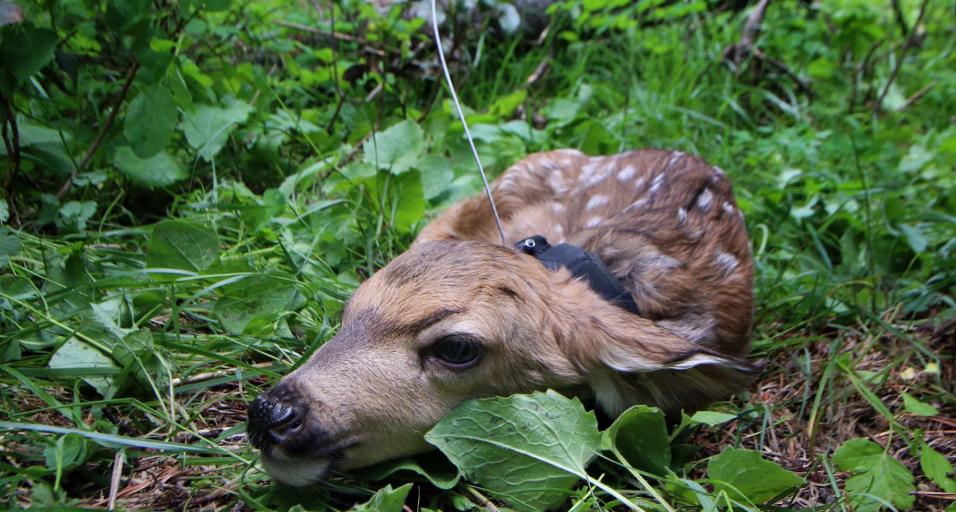Game and Fish personnel from both the Jackson and Pinedale regions joined researchers from the Wyoming Cooperative Fish and Wildlife Research Unit to continue Phase II of the Wyoming Range Mule Deer Study looking at fawn survival. The fawn survival study began in 2015 and has revealed the following statistics:
2015
Tracked the fate of 58 animals (including 3 stillborns)
45% died in the summer
10% died in the winter
55% total mortality
Median birthdate was 6/10/2015
Average weight 3.79
2016
Tracked the fate of 70 animals (including 7 stillborns)
56% died in the summer
44% died in the winter
100% total mortality
Median birthdate was 6/13/2017
Average weight 3.80
2017
Tracked the fate of 65 animals (including 7 stillborns)
52% died in the summer
7% died in the winter
Median birthdate was 6/17/2017
Average weight 3.29
Several causes of death have been identified, impacting fawn survival do a varying degree each year, including: disease, malnutrition, predation, physical injury, still born and some were simply unknown. In 2015, disease seemed to be a fairly significant factor. In 2016, predation played more of a factor. In 2017, an equal portion of the fawns were predated, stillborn and died of unknown causes at 26% each, but all of the causes of death played a role each year.
Both Phase I & Phase II of the Wyoming Range Mule Deer Project were initiated to address research and management needs identified in the Wyoming Range Mule Deer Initiative. Habitat and predation were key topics identified during the public input process of the initiative and understanding their relationship to fawn survival and overall recruitment will aid managers in developing strategies to encourage population growth.
Following Fawns in the Wyoming Range
Mark Gocke, Public Information Specialist, 307-733-2321

